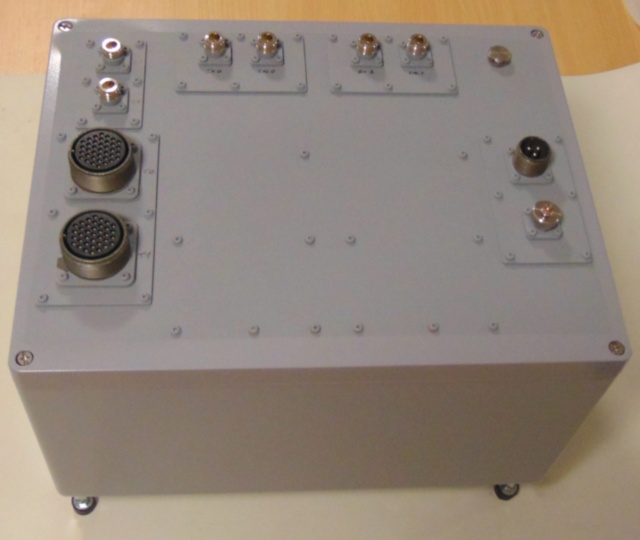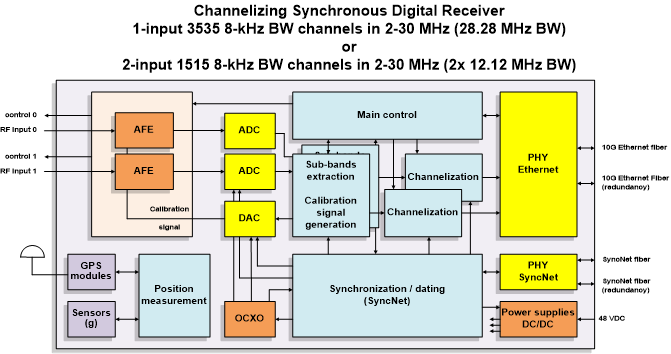
PDF datasheet (fr)
SYDRE: 1- or 2-input Synchronous Digital HF Receiver
The SYDRE synchronous digital receiver is mainly designed for use in HF antenna arrays, and allows at-the-antenna full HF band digitization and channelization over ethernet. Time alignement between receivers relies on FEE's SyncNet picosecond-level synchronization system. An auto-calibration system allows integrated equalization of the analog front-end (AFE).
The outdoor receiver (prototype below) is aimed to be used for at-the-antenna digitization.

The rack receiver is aimed to be used in radio shack or lab, mainly for system integration purposes.


The receiver's architecture includes 2x 50-ohm Analog Front-Ends (AFE) modules feeding a 2-input digitization board which includes 2x 10G SFP+ ethernet links and 2x SyncNet ports, associated with a DSP daughter board.

After digitization, the HF signal is channelized and equalized, the time-stamped output data are packetized and sent through ethernet multicast.
A given user can then subscribe (through IGMP protocol) only for specific channels packets of interest to the ethernet switch, allowing minimal overhead. Users can then scale from laptop to massive computers.
Time stamping is same for all receivers, but packets' sending order is different for each receiver, in order to spread traffic at user level. Any number of users can be handled, as long as the ethernet network (switches tree) is well designed.
An additional multicast address can be used to periodically transmit mean and peak power values for each channel, allowing real-time full HF spectrum visualization (up to 50 fps) at low data rate and minimal computing cost on user side.
In 1-input configuration, channelization provides 3535 consecutive channels of 8 kHz bandwidth complex signals (28.28 MHz total bandwidth), each sampled at 10 kHz.
If required, an efficient user-level FFT-based preprocessing stage allows higher bandwidth signal reconstruction.
Network required bare bandwidth is 80 Mbits/s per channelized MHz. Packetization overhead, due to data and network headers, consumes about 10% more.
The ethernet network must be sized at least for 100 Mbits/s per channelized MHz, ie about 3..4 Gbits/s per receiver.
Of course, the receiver can be used alone, without SyncNet (internal timebase used then).
PDF datasheet (fr)